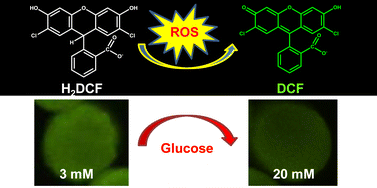Measurement of DCF fluorescence as a measure of reactive oxygen species in murine islets of Langerhans
Abstract
In islets of Langerhans, oxidative stress induced by reactive oxygen species (ROS) is thought to be critically involved in β-cell dysfunction during the development of diabetes. However, ROS have also been hypothesized to play a role in cellular signalling. To aid in delineating the effects of ROS in living islets of Langerhans, the endocrine portion of the pancreas that contain β-cells, we sought to develop a robust and reproducible protocol to measure these species using the fluorescent dye, 2′,7′-dichlorodihydrofluorescein diacetate (H2DCF-DA). The protocol that was developed minimized photobleaching and leakage of H2DCF from murine islets and utilized a normalization procedure to further reduce experimental variability. The method allowed for ∼25 min of DCF measurement in living islets. We used the developed protocol to compare DCF fluorescence from batches of islets incubated in varying glucose concentrations and observed ∼1.5-fold higher fluorescence signals in 3 vs. 20 mM glucose. The effects of diazoxide, which clamps open K+ATP channels reducing intracellular [Ca2+] ([Ca2+]i) without affecting glucose metabolism, were also investigated. The presence of diazoxide increased DCF fluorescence at all glucose concentrations tested while addition of 30 mM K+ to increase [Ca2+]i reduced the fluorescence by ∼15%. With the developed protocol, all experimental methods tested to increase [Ca2+]i resulted in a decrease in DCF fluorescence, potentially indicating involvement of ROS in intracellular signalling cascades.


 Please wait while we load your content...
Please wait while we load your content...